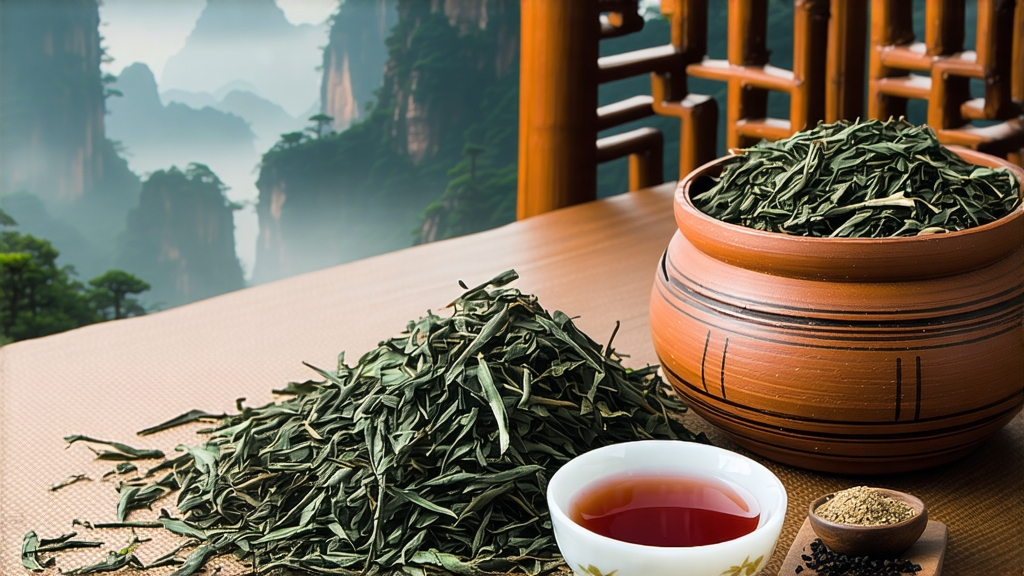
Ask most tea lovers to name China’s oldest black tea and they will answer, without hesitation, Lapsang Souchong. Born in the precipitous Wuyi Mountains of northern Fujian around the mid-17th century, this pioneering red tea (hong cha) was the first to leave China’s shores in serious quantity, sailing on Dutch East India ships to thrill the courts of Europe and inspiring the bohea craze that would reshape global trade. Today, while newer black teas steal shelf space, Lapsang Souchong remains a benchmark of terroir, craft and, above all, aroma—an aroma so distinctive that even novices can identify it blindfolded: the scent of a campfire distilled into a cup.
Historical records place the tea’s origin in Tongmu Village, a tiny settlement tucked inside a national nature reserve where the Min River cuts through granite cliffs shrouded in mist. Local legend credits an army unit passing through in 1646 with accidentally accelerating tea production; to dry the leaves quickly before the soldiers arrived, farmers spread them over pine fires, thus discovering the sweet, resinous fragrance that would become the tea’s signature. Whether myth or marketing, the story underscores the central role of pine smoke in defining the style. By the early Qing dynasty, Lapsang Souchong was already being bartered for silver in the port of Xiamen, and by 1700 it had reached London coffee-houses, where Samuel Pepys noted tasting “a strange, smoked China drink.”
Strictly speaking, only leaf picked inside the 600-meter contour of Tongmu and processed within its three natural valleys may be called Zheng Shan Xiao Zhong—“Original Mountain Small Sort.” Outside that micro-zone, similar techniques yield Waishan (outside-mountain) styles, pleasant but lacking the mineral depth imparted by Tongmu’s rocky, well-drained subsoil and the cool, ever-present mist. Within the authentic appellation, two stylistic branches have evolved. The traditional, heavily smoked version exports its perfume of pinewood and longan to Russia and the Middle East, while a newer, unsmoked “craft” or “sweet” style, developed in the early 2000s for the domestic Chinese market, highlights cocoa, honey and dried-fruit notes. Both share the same cultivar—Wuyi Cai Cha, a hardy seed-propagated bush with small, thick leaves that tolerate high heat during withering.
Harvest begins in late April, when the standard is one bud with two or three leaves, plucked at 60 % opening. The leaves are first spread 3 cm deep on bamboo trays set over dying pine embers in a half-underground hearth called a qinglou. For twelve to sixteen hours the tea absorbs aromatic volatiles—guaiacol, syringol, cresol—while moisture drops to 45 %. Next comes rolling, done on cast-iron tables with a slow, rocking motion that bruises cells without shredding the leaf. Oxidation follows in wooden trays lined with wet cloth; here, the leaf’s catechins convert to theaflavins and thearubigins, turning the initially jade-green leaf a coppery mahogany in roughly three hours. The critical firing stage again uses pine, now blazing at 200 °C for two minutes, then 80 °C for a further twenty, halting oxidation and fusing smoke to leaf. Finally, the tea is sorted by hand into six grades based on leaf size and tip content, the choicest being Chaxing (“tea heart”), a glossy black needle with golden tips that yields a brilliant crimson liquor.
To brew Lapsang Souchong gongfu style, use 5 g of leaf in a 120 ml gaiwan. Rinse briefly with 95 °C water to awaken the leaves, then infuse for five seconds, adding two seconds each subsequent steep. The first infusion releases a burst of pine and dried longan; the second brings forward cocoa and baked sweet potato; by the fifth, a cooling mineral note reminiscent of Wuyi rock cliff emerges. If the smoke feels aggressive, lower the temperature to 90 °C and flash-steep; the sweetness will rise while the embered edge softens. Western drinkers may prefer 3 g per 250 ml mug, three minutes at 95 °C, though this mutes the layered evolution gong